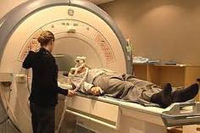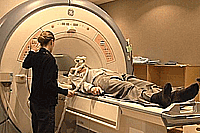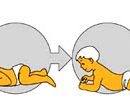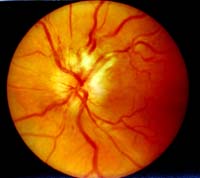Hepatic encephalopathy develops slowly, the only manifestations for several days or weeks can be confusion, drowsiness and tremor. The causes of these symptoms may be many diseases. How to recognize the disease? Find out more!
Content
What is hepatic encephalopathy
The state characterized by the term «Hepatic encephalopathy» (PE), includes a spectrum of neuropsychiatric disorders, developing with liver failure and / or cirrhosis.
What are the causes of hepatic encephalopathy
 The main reasons leading to the development of hepatic encephalopathy are liver diseases: acute hepatic insufficiency (OPON) and liver cirrhosis. Hepatic encephalopathy caused by OPN, is characterized by high mortality: about 80% of patients die without a liver transfers. However, those who have recovered the forecast is favorable (there are no signs of chronic liver disease and hepatic encephalopathy). With cirrhosis, liver encephalopathy is the most severe and unfavorable complication. In the absence of clinical signs of hepatic encephalopathy in 30-80% of patients with cirrhosis, additional psychometric examination reveals neuropsychiatric disorders. This condition is indicated as latent (hidden) hepatic encephalopathy (LPE).
The main reasons leading to the development of hepatic encephalopathy are liver diseases: acute hepatic insufficiency (OPON) and liver cirrhosis. Hepatic encephalopathy caused by OPN, is characterized by high mortality: about 80% of patients die without a liver transfers. However, those who have recovered the forecast is favorable (there are no signs of chronic liver disease and hepatic encephalopathy). With cirrhosis, liver encephalopathy is the most severe and unfavorable complication. In the absence of clinical signs of hepatic encephalopathy in 30-80% of patients with cirrhosis, additional psychometric examination reveals neuropsychiatric disorders. This condition is indicated as latent (hidden) hepatic encephalopathy (LPE).
Hepatic insufficiency leads to the development of imbalance in the level of amino acids and an increase in the blood content of neurotoxins (toxic substances that affect mainly nervous cells). This causes swelling and functional impairment of astrohlo: the permeability of the protective barrier increases between the total bloodstream and brain blood flow, the processes of transferring the nerve pulses and providing nerve cells by energy, which is clinically manifested by symptoms of encephalopathy.
The role of ammonia in the development of the disease
Ammonia is basic among neurotoxins. In a healthy body, a balance is maintained between its formation and disposal. The main sources of ammonia formation are: a thick intestine (protein and urea processing of bacterial microflora), muscles (proportional to physical load), kidney, a small intestine (decay of the amino acid of glutamine - the main source of energy of the intestinal mucosa cells), liver (protein cleavage). For disposal of ammonia in the body there are two mechanisms: the synthesis of urea in the liver, the formation of glutamine both in the liver and in the muscles, brain. Ammonia penetrates the brain where the neurotoxic effect is caused: the synthesis of the main source of cell energy - ATP is reduced, the normal balance of amino acids and neurotransmitters is disturbed.
Amino acid imbalance is characterized by an increase in the blood content of aromatic amino acids. This causes a significant flow of aromatic amino acids in the brain and the synthesis of the so-called «False» Neurotransmitters - significantly less active substances than physiological norepinephrine and dopamine. Also, the concentration of the brake neurotransmitter of gamma-amine oil acid (GAMK) is also increasing. In addition to ammonia to the Endogenous Neurotoxin group also include mercaptans and fatty acids. These substances are products of bacterial processing in the colon of sulfur-containing amino acids and food fats. Normally, they are neutralized by the liver.
Symptoms of hepatic encephalopathy
Hepatic encephalopathy develops slowly, the only manifestations for several days or weeks may be the confusion, drowsiness and asterixis (clapping tremor). The severity of neuropsychiatric symptoms of hepatic encephalopathy ranges from the light steps to the deep coma. Symptoms of hepatic encephalopathy are determined by clinically and cover changes in consciousness, intelligence, behavior and muscle disorders. The main criterion for determining the hepatic encephalopathy stage is the state of consciousness.
- In the first stage of hepatic encephalopathy, sleep rhythm is disturbed: drowsiness day and insomnia appears at night.
- In the second stage, drowsiness increases and can go to lethargy.
- In the third stage, the above symptom joins the disorientation in time and space and the confusion of consciousness. Separate patients develop epileptic seizures, spastic paraplegia.
- The fourth stage is the coma itself - characterized by the lack of consciousness and reaction to pain irritants.
The dedicated stages of encephalopathy can consistently move one to another, while most of the symptoms appearing on earlier stages are preserved on the following. In addition, latent (hidden) liver encephalopathy (LPE), when clinical symptoms of hepatic encephalopathy are absent, but with an additional study, a number of neuropsychic disorders are found, namely a decrease in the speed of cognitive activity and the accuracy of fine motility. LPE is considered as the preceding stage of severe hepatic encephalopathy. The frequency of its detection in patients with cirrhosis of the liver is 50-70%.
What diagnostic methods exist to identify hepatic encephalopathy
 Definition of ammonia level. In most patients with hepatic encephalopathy (more than 90%), the level of ammonia in the blood is significantly increased. At the same time, normal concentration should not be the basis for excluding the diagnosis of hepatic encephalopathy. Psychometric testing. It is used to identify LPE and to detail mental disorders in the hepatic encephalopathy of the first and second stages. Two test groups are distinguished: Tests on the speed of cognitive reaction (Number communication test) and tests for the accuracy of fine motility (test line or labyrinth). For example, when performing a communication test of numbers, the patient connects the line of numbers from 1 to 25, printed by a broken sheet on a sheet of paper. The test estimate is the time spent by the patient on its execution, including the time required to correct errors. The sensitivity of psychometric tests in identifying LPE is 70-80%. Electroencephalography. EEG sensitivity in identifying LPE low - about 30%.Caused by brain potentials (VP). It is more sensitive than EEG, the method of identifying LPE. (sensitivity of about 80%). Magnetic resonance spectroscopy (MRC). A particularly sensitive method in identifying LPE and evaluating the severity of PE (sensitivity in identifying LPE is approaching 100%).
Definition of ammonia level. In most patients with hepatic encephalopathy (more than 90%), the level of ammonia in the blood is significantly increased. At the same time, normal concentration should not be the basis for excluding the diagnosis of hepatic encephalopathy. Psychometric testing. It is used to identify LPE and to detail mental disorders in the hepatic encephalopathy of the first and second stages. Two test groups are distinguished: Tests on the speed of cognitive reaction (Number communication test) and tests for the accuracy of fine motility (test line or labyrinth). For example, when performing a communication test of numbers, the patient connects the line of numbers from 1 to 25, printed by a broken sheet on a sheet of paper. The test estimate is the time spent by the patient on its execution, including the time required to correct errors. The sensitivity of psychometric tests in identifying LPE is 70-80%. Electroencephalography. EEG sensitivity in identifying LPE low - about 30%.Caused by brain potentials (VP). It is more sensitive than EEG, the method of identifying LPE. (sensitivity of about 80%). Magnetic resonance spectroscopy (MRC). A particularly sensitive method in identifying LPE and evaluating the severity of PE (sensitivity in identifying LPE is approaching 100%).
Is there an effective treatment for hepatic encephalopathy?
Currently, three main groups of events are included in the complex treatment of hepatic encephalopathy: diet, drug therapy, liver transplantation.
Diet. In patients with hepatic encephalopathy, dietary measures are directed, on the one hand, to limit admission from food protein, which pursues the goal to reduce the formation of ammonia in the colon, on the other - to ensure admission from food enough calorie (at least 1500 kcal / day), What leads to a decrease in decay processes. With severe hepatic encephalopathy, the daily protein intake is reduced to 20-30 g. After improving the clinical condition, the protein content in the diet increases every 3 days by 10 g to daily consumption of 1 g per 1 kg of body weight. Long limitation of protein in nutrition of patients with hepatic encephalopathy is now not used, as it contributes to the destruction of the inner proteins of the body and leads to an increase in nitrogen-containing compounds.
All specific medication therapy, depending on its orientation, can be divided into several groups. The most famous and widely used drug for the treatment of PE is a lactulose, which is a synthetic disaccharide. The main mechanism of its action is to reduce the concentration of ammonia in the blood by reducing its receipt from the intestine. The positive effect of treatment with lactulose is shown in multicenter studies. It is achieved in 60-70% of patients with PE and depends on the severity of the liver cirrhosis and the degree of portal hypertension. The dose of lactulose is selected individually and ranges from 30 to 120 ml per day. Optimal doses are those at which a soft consistency stool is achieved 2-3 times a day. To reduce the formation of toxins, including ammonia in the colon, antibiotics are also used. Currently, rifaximin, vancomycin, ciprofloxacin and metronidazole are most widely used in the treatment of hepatic encephalopathy. An essential drawback in antibiotics is a limitation of the timing of their application, which makes it impossible to use their use in long-term prevention of hepatic encephalopathy. Among drugs used to reduce brake processes in the central nervous system, nootropic agents (flohomazenyl) were most common. In the treatment of hepatic encephalopathy, branched side chain amino acids can also be used, normalizing the amino acid composition of the blood. Especially widely they are used in patients with liver cirrhosis. Zinc can be used as a supplement to the main therapy in patients with hepatic encephalopathy.
With severe, progressive hepatic encephalopathy, as well as patients with hepatic insufficiency, the only effective way of treatment is liver transplantation.
Treatment of latent hepatic encephalopathy (LPE)
In one of the recent studies, the profile of the influence of the disease on the daily activity of patients with cirrhosis of the liver with LPE and without it. It has been established that in the group of patients with LPE significantly reduces the quality of life on such scales as social adaptation, level of anxiety, interpersonal contacts, rhythm of rest - work. Patients with LPE, as a rule, retain ability to work, but these changes cause the need for their correction. The development of PE during acute and chronic liver diseases is the most severe and prognostically unfavorable complication.
In 50-70% of patients with cirrhosis of the liver when conducting psychometric testing, LPE is detected. Treatment includes identifying and eliminating factors caused by disease, as well as diet and specific drug therapy. For the treatment of PE and LPE, several groups of drugs with a different mechanism of action are used, among which lactulose was obtained the greatest distribution. As has been proven by the study conducted in Germany, after 8 weeks of treatment with lactulose (Duhalak drug) in 88% of patients with LPE, there was a distinct improvement in the results of psychometric tests.









